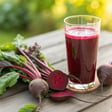Iron is one of those nutrients that doesn't get much attention until something goes wrong. Many people struggle with low iron levels without realizing it.
Iron in Diet: Why It Matters More Than You Think
When was the last time you thought about your iron intake? For most of us, probably not recently. Yet iron deficiency is surprisingly common, affecting about 10% of women under 49 and many seniors too.
Iron plays a crucial role in carrying oxygen throughout your body. Without enough, you might feel constantly tired, irritable, or unable to focus. Last month, I noticed I was dragging myself through afternoons despite getting decent sleep. A simple blood test revealed my iron levels were on the low end of normal.
"Iron deficiency can masquerade as many different health problems," says Dr. Sarah Jenkins, a nutrition specialist at Michigan Health. "Many people attribute their fatigue to busy lifestyles when sometimes it's actually nutritional."
What's particularly interesting is the emerging connection between iron and mental health. Research from the University of Michigan suggests that low iron levels may worsen symptoms of depression and anxiety in some people. This makes sense when you consider iron's role in brain function and energy production.
Foods with Iron: Everyday Options You Might Be Missing
Getting enough iron doesn't require special supplements or complicated meal plans. Many everyday foods pack a significant iron punch:
Animal sources (heme iron):
- Lean beef (3.5 oz contains about 2.7 mg)
- Chicken thighs (1.3 mg per 3.5 oz)
- Tuna (1.2 mg per 3.5 oz)
Plant sources (non-heme iron):
- Lentils (3.3 mg per half cup)
- Spinach (3.2 mg in half cup cooked)
- Tofu (3 mg per half cup)
- Cashews (1.9 mg per ounce)
I've started keeping boiled eggs and a container of mixed nuts in my fridge for quick iron-rich snacks. Nothing fancy, but it works.
Healthy Iron Intake: How Much Do You Actually Need?
The recommended daily iron intake varies significantly based on age, gender, and life stage:
- Women (19-50): 18 mg
- Men (all adult ages): 8 mg
- Adults over 51: 8 mg
- Pregnant women: 27 mg
These numbers surprised me – I hadn't realized the requirements drop so much after menopause. Many seniors don't adjust their supplement routines to reflect these changing needs.
Remember that too much iron can be harmful, especially for those with certain genetic conditions like hemochromatosis. If you're considering supplements, check with your healthcare provider first.
Iron for Energy: Beyond Just Fighting Fatigue
While fatigue is the classic sign of iron deficiency, low levels can affect your body in less obvious ways. According to research from Rush University Medical Center, other symptoms might include:
- Unusual cravings for ice or non-food items
- Brittle nails
- Frequent infections
- Restless leg syndrome
- Headaches
- Cold hands and feet
A colleague of mine discovered her iron was low after complaining about restless legs at night for months. Within weeks of addressing her iron intake, her sleep improved dramatically.
Easy Iron Sources: Practical Tips for Better Absorption
The iron in your food isn't always fully absorbed. Here are some practical ways to maximize absorption:
- Pair iron-rich foods with vitamin C sources (orange juice, bell peppers, strawberries)
- Cook in cast iron pans when possible
- Avoid drinking tea or coffee with meals (wait at least an hour)
- Be cautious with calcium supplements, which can block iron absorption
I've started squeezing lemon juice over my spinach salads – not just for taste, but because the vitamin C helps my body use the iron more efficiently.
Iron and Aging: What Changes as We Get Older?
As we age, several factors can affect iron status:
- Decreased stomach acid production, which reduces iron absorption
- Increased use of medications that may interfere with iron uptake
- Changes in appetite and food intake
- Chronic health conditions that affect nutrient absorption
"Many seniors focus on calcium and vitamin D but overlook iron," explains nutritionist Maria Gonzalez. "Yet iron deficiency can significantly impact quality of life in older adults."
Diet for Iron: Creating Simple, Sustainable Habits
Rather than overthinking each meal, try these straightforward approaches:
- Include a source of protein at each meal
- Add leafy greens to at least one meal daily
- Keep iron-rich snacks easily accessible
- Consider cooking more often in cast iron cookware
- If you don't eat meat, be more intentional about plant iron sources
Last Tuesday, I made a big batch of lentil soup that lasted several days – an effortless way to boost my iron intake without daily planning.
Iron Health Tips: When to Consider Testing
How do you know if you should be concerned about your iron levels? Consider talking to your doctor if you're experiencing:
- Persistent fatigue that doesn't improve with rest
- Dizziness or weakness
- Pale skin
- Shortness of breath during normal activities
- Difficulty concentrating
A simple blood test can check your hemoglobin, ferritin, and other markers of iron status.
Senior Nutrition: Balancing Iron With Other Needs
For older adults, balancing various nutritional needs becomes increasingly important. Iron needs must be considered alongside other nutrients like calcium, vitamin B12, and vitamin D.
Some practical approaches include:
- Mediterranean-style eating patterns with lean proteins and abundant vegetables
- Limiting processed foods, which provide calories but few nutrients
- Staying adequately hydrated, which supports overall nutrient absorption
- Considering a multivitamin formulated specifically for seniors
My 73-year-old father recently switched to a senior-specific multivitamin after realizing his old standard one contained iron levels more appropriate for younger adults.
How Do I Know If I'm Getting Enough Iron?
This is perhaps the most common question, and unfortunately, symptoms of low iron can be subtle or attributed to other causes. Beyond fatigue, watch for:
- Pale inner eyelids (a classic sign doctors check)
- Brittle nails with ridges
- Frequent infections
- Hair loss
- Restless legs, especially at night
- Unusual cravings
If you suspect low iron, don't self-diagnose. Over-supplementing with iron can be dangerous. A healthcare provider can order appropriate blood tests and interpret the results in context with your overall health.
Disclaimer: This article is for informational purposes only and is not a substitute for professional medical advice. Please consult with a healthcare provider before making significant changes to your diet or starting supplements, especially if you have underlying health conditions.
Tags

About Elliott Greenway the Author
Elliott Greenway is a seasoned environmentalist and avid cyclist with over a decade of experience promoting sustainable transport solutions. His expertise in eco-friendly cycling has inspired countless individuals to take up cycling as a means to reduce their carbon footprint and embrace a healthier lifestyle.
Recommended Articles
4 Everyday Drinks Being Studied for Circulation Support
Explore 4 everyday drinks that may enhance circulation, including herbal teas, coffee, red wine, and beetroot juice. Discover their health benefits.
Why More Seniors Are Considering Compact Mobility Tech
Explore how compact mobility tech enhances independence and quality of life for seniors, making daily activities more accessible and enjoyable.
Why More Seniors Are Replacing Walkers With This Sleek Device
Discover why seniors are opting for sleek mobility devices over traditional walkers, enhancing their independence with style and functionality.
2025 Cadillac CT4 Combines Performance With Refined Luxury
Discover the 2025 Cadillac CT4, where thrilling performance meets luxury, featuring advanced safety, elegant interiors and powerful engine options.
2025 Lexus RX Keeps the Luxury SUV Crown With Smarter Features
The 2025 Lexus RX redefines luxury SUVs with advanced tech, safety features, and a focus on comfort for an unparalleled driving experience.




